
Economics_-_New_Ways_of_Thinking
.pdf
The Taft-Hartley Act
The congressional sentiment that made the Wagner Act possible in 1935 began to shift after World War II. A few particularly damaging strikes in 1946 set the stage for the Taft-Hartley Act in 1947. This act gave states the right to pass right-to-work laws, which prohibit unions from requiring employers to make union membership a condition of employment.
The Landrum-Griffin Act
Congress passed the Landrum-Griffin Act in 1959 with the intent of policing the internal affairs of labor unions. The act calls for regular union elections and secret ballots, and it requires union leaders to report on their unions’ finances. It also prohibits former convicts and communists from holding union office. The Landrum-Griffin Act was passed because the U.S. public became concerned during the late 1950s that some labor union leaders had misappropriated funds and were involved in corruption.
The Growth in Public Employee
Unions
A public employee union is a union whose members work for the local, state, or federal government. By far the most important development in the labor movement in the 1960s and 1970s was the sharp growth in public employee union membership. The main issue raised by public employee unions is the right to strike. These unions feel they should be able to exercise this right, but their opponents argue that public sector strikes—by police officers or firefighters, for example—could have a crippling effect on society.
Government Regulation
In the United States, government often regulates business and labor practices. We already discused in the previous chapter how government might regulate a natural monopoly firm. In Chapter 3, we discussed how government often regulates business when it comes to issues such as air quality.
Government also regulates labor markets, with regard to issues such as hiring practices and safety regulations. For example, the Occupational Safety and Health Administration (OSHA) is a regulatory government agency that is concerned with protecting workers against occupational injuries and illnesses. The Consumer Product Safety Commission (CPSC) specifies minimum standards for potentially unsafe products. A business firm cannot simply make any type of toy to sell, but only toys that are not likely to harm the children who use them. The Environmental Protection Agency (EPA) regulates the amount of pollution business firms can emit into the air or rivers.
Not everyone agrees as to the value of government regulation. Some people argue that most regulation is too costly to taxpayers. The proponents of regulation counter that even though the costs are high, the benefits are higher. They say, for example, that highway fatalities would be 40 percent higher in the absence of automobile safety features mandated through regulation. They also say that mandated childproof lids resulted in 90 percent fewer child deaths caused by accidental swallowing of poisonous substances. Proponents of regulation also say that restrictions on the use of asbestos save between 630 and 2,553 persons from dying of cancer each year.
 In 1987 Beech-Nut Nutrition Corporation, a baby food manufacturer, pleaded guilty to 215 felony counts. (A felony is a major crime.) The company had sold millions of containers of sugar water and flavoring that it had labeled “100 percent apple juice.”
In 1987 Beech-Nut Nutrition Corporation, a baby food manufacturer, pleaded guilty to 215 felony counts. (A felony is a major crime.) The company had sold millions of containers of sugar water and flavoring that it had labeled “100 percent apple juice.”
 Cordis Corporation produced and sold thousands of pacemakers that it knew were defective. Many of the pacemakers failed, and the company ended up pleading guilty to 25 criminal violations.
Cordis Corporation produced and sold thousands of pacemakers that it knew were defective. Many of the pacemakers failed, and the company ended up pleading guilty to 25 criminal violations.
Government regulation, whether it has to do with prices and profits, consumer information, or working standards, continues to be a major topic of debate. The next section explains why.
244 Chapter 9 Labor, Employment, and Wages
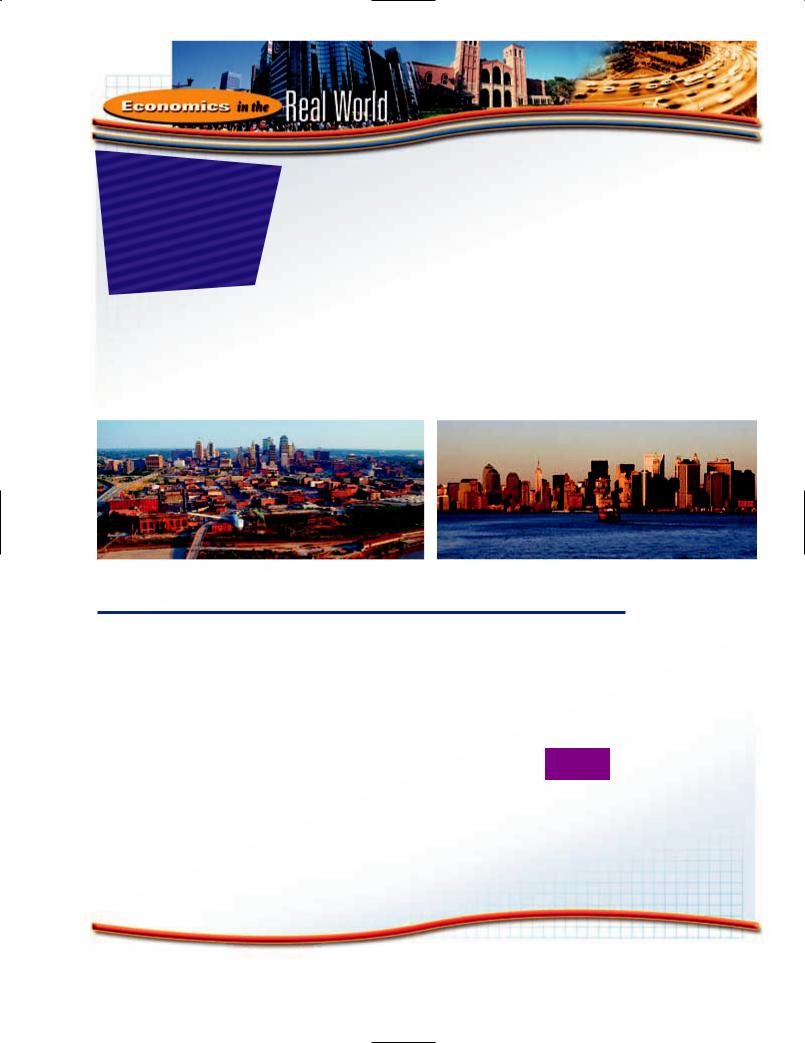
When Is ? $50,000
Not $50,000?
Aperson can live in many different places in the United
States. Depending on where you live, you may end up paying more or less for certain goods and services. For example, the median house
for you. In fact, an annual salary of $39,646 in Bridgeport, Connecticut, will get you everything that an annual salary of $50,000 will get you in Seattle.
Now let’s say that instead of moving from Seattle to Bridgeport, you are thinking of moving to Thousand Oaks, California. Will $50,000 in Thousand Oaks buy you what it does in Seattle? The answer is no. You will need $57,074 in Thousand Oaks, California, to do what $50,000 did in Seattle, mostly
a part of an economics course? Well, one day you’re going to be working at some job earning a salary. You may get a higher-paying job offer in another city. Is getting a raise of $10,000 going to be worth your moving? You will want to see what the cost of living is like in the city you are thinking of moving to. You may have to call up your prospective employer in the new city and tell him or her that even with the $10,000 raise, your standard of living is going down
How do you think the cost of living in Kansas City (left) might compare with the cost of living in New York City (right)? Where can you find specific comparisons?
price in Boston is much higher than the median house price in Lexington, Kentucky. Health care costs are higher in New York City than in Birmingham, Alabama.
What all this means is that a dollar in one place may get you more or less than it gets you in another place. Suppose you live and work in Seattle, Washington, where you earn an annual income of $50,000. You are thinking of moving to Bridgeport, Connecticut. You wonder whether $50,000 in Bridgeport will do as much for you as it does in Seattle. The answer is that it will do more
because housing costs are higher in Thousand Oaks than in Seattle.
Numerous cost-of-living calculators are available on the Web to help you figure out what you will need to earn in various cities to have the standard of living you have in your current city. You can find these calculators by going to any search engine and keying in “cost-of-living calculator.” One
can be found at www.emcp.net/ costofliving.
Interesting, you say, but how does all this information relate to reading this book in high school as
because of the higher housing and health costs in the new city. For example, it would take an additional $27,000 over a $50,000 salary earned in Seattle to maintain one’s standard of living in San Francisco.
If it takes $2 in city A to do what $1.40 does
in city B, then in which city do you think nurses will earn a higher annual income?
Section 2 Labor and Government Regulation 245

Toyota’s Prius hybrid sedans roll off the production line at the Tsutsumi plant in Toyota City, in western Japan. Have government regulations in the United States impacted the sales of Toyota’s Prius?
What have governments done to solve problems such as poor air quality?
The Costs and Benefits of
Government Regulation
Suppose a business firm is polluting the air with smoke from its factories. The government passes an environmental regulation requiring that this business firm purchase antipollution devices that cut down on the smoke emitted into the air. What are the benefits of this kind of regulation? First is cleaner air, which may lead to fewer medical problems in the future. For example, in some U.S. cities, the pollution from cars and factories causes peo-
ple to cough, feel tired, and experience eye discomfort. Some of these people have continuing medical problems from constantly breathing dirty air. Government regulation that ends up reducing the amount of pollution in the air surely helps these people, reducing lost work time and health care costs.
Regulation may also benefit the environment and thus the people who enjoy a clean environment. For example, some air pollution can harm birds and destroy certain types of plants and trees. Cleaner air may ensure more birds singing and prettier trees to view.
Regulation, however, does not come with benefits only. It comes with costs, too. For example, a business firm that incurs the cost of required antipollution devices experiences a rise in its overall costs of production. As a result, the business firm may produce fewer units of its product, which raises its product price and results in some workers losing their jobs.
If you are a worker who loses your job, you may view the government’s insistence that business install pollution devices differently than if you are a person suffering from weak lungs. If you have weak lungs, less pollution may be the difference between your feeling
246 Chapter 9 Labor, Employment, and Wages
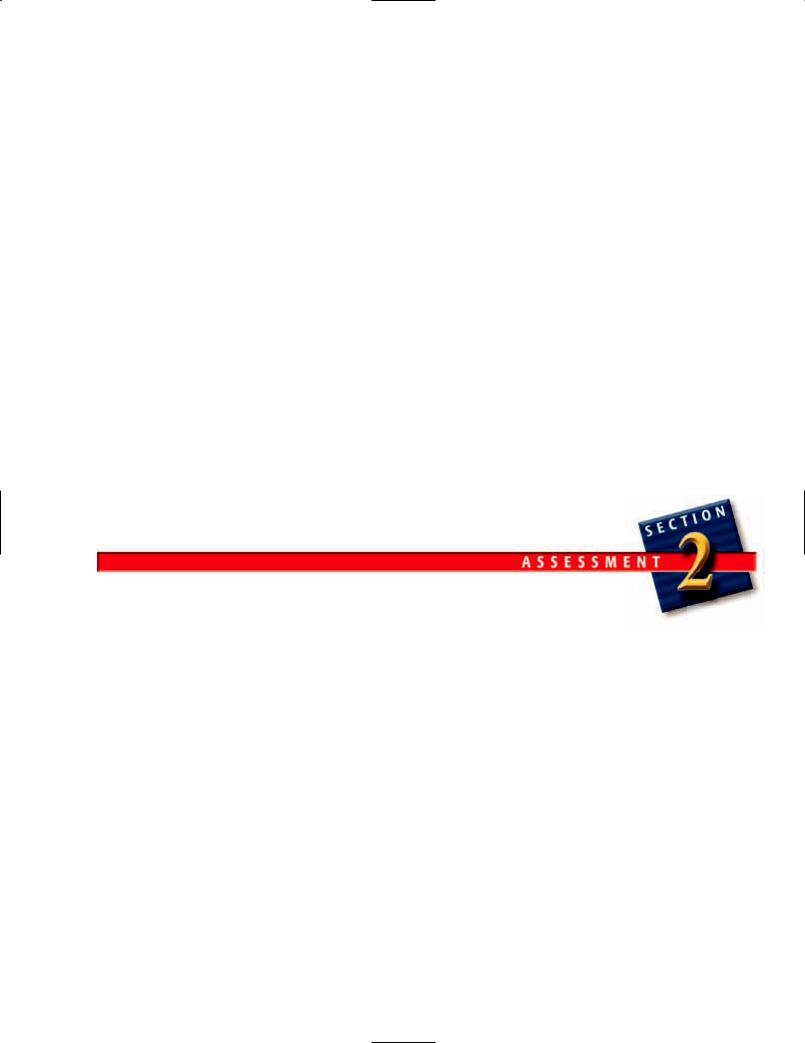
well or sick. If you are a worker for the business firm, less pollution may end up costing you your job. Ideally, you may prefer to have a little less pollution in your neighborhood, but not at the cost of losing your job.
Where do economists stand on these issues? Are they for or against government regulation of the type described? They are neither for nor against such regulation; the job of the economist is continually to point out both the benefits and the costs of regulation. To the person who sees only the costs, the economist asks, “But what about the benefits?”And to the person who sees only the benefits, the economist asks, “But what about the costs?” The economist then goes on to outline the benefits and costs as accurately as possible.
Unintended Effects of Regulation
In addition to outlining the benefits and costs of regulation, the economist tries to point out the sometimes unintended consequences of regulation. The government, which often regulates the manufacturers of
must get an average of 40 miles per gallon instead of, say, 30 miles per gallon. Many people say that this regulation is good. They reason that if car companies were made to produce cars that got better mileage, people would not need to buy and burn as much gasoline. With less gasoline burned, less pollution would be produced.
It is not guaranteed to work out this way, though. If car companies produced cars that were more fuel efficient, people would have to buy less gasoline to take them from one place to another. The cost per mile of traveling would fall, so people might begin to travel more. Leisure driving on Saturday and Sunday might become more common, people might begin to drive farther on vacations, and so on. If people began to travel more, the gasoline saving that resulted from the higher fuel economy standards might be offset or even outweighed. More gasoline consumption due to more travel would mean more gas burned and more pollutants ending up in the air. In other words, a regulation requiring car companies to produce
Defining Terms
1.Define:
a.Taft-Hartley Act
b.right-to-work law
c.union shop
2.What is the difference between a union shop and a closed shop?
Reviewing Facts and
Concepts
3.Labor union A wants to increase the demand for its member workers.
Identify two things the union can do to try to achieve this outcome.
4.Is the union shop illegal in right-to-work states?
5.What did the NorrisLaGuardia Act accomplish?
6.How does the economist view government regulation?
Critical Thinking
7.Do you think it was right for the courts, in the early days of labor unions, to issue injunctions that prevented strikes and other union activities? Why or why not?
8.“If the government imposes higher fuel economy standards, the amount of pollution produced by automobiles will undoubtedly become less.” Do you agree or disagree? Explain your answer.
Applying Economic
Concepts
9.The members of labor union X produce cars in the United States for sale in the United States only. The U.S. Congress is contemplating imposing a quota, restricting the number of foreignproduced cars that can be sold in the country. Are the members of labor union X likely to support or not support this action? Explain your answer.
Section 2 Labor and Government Regulation 247
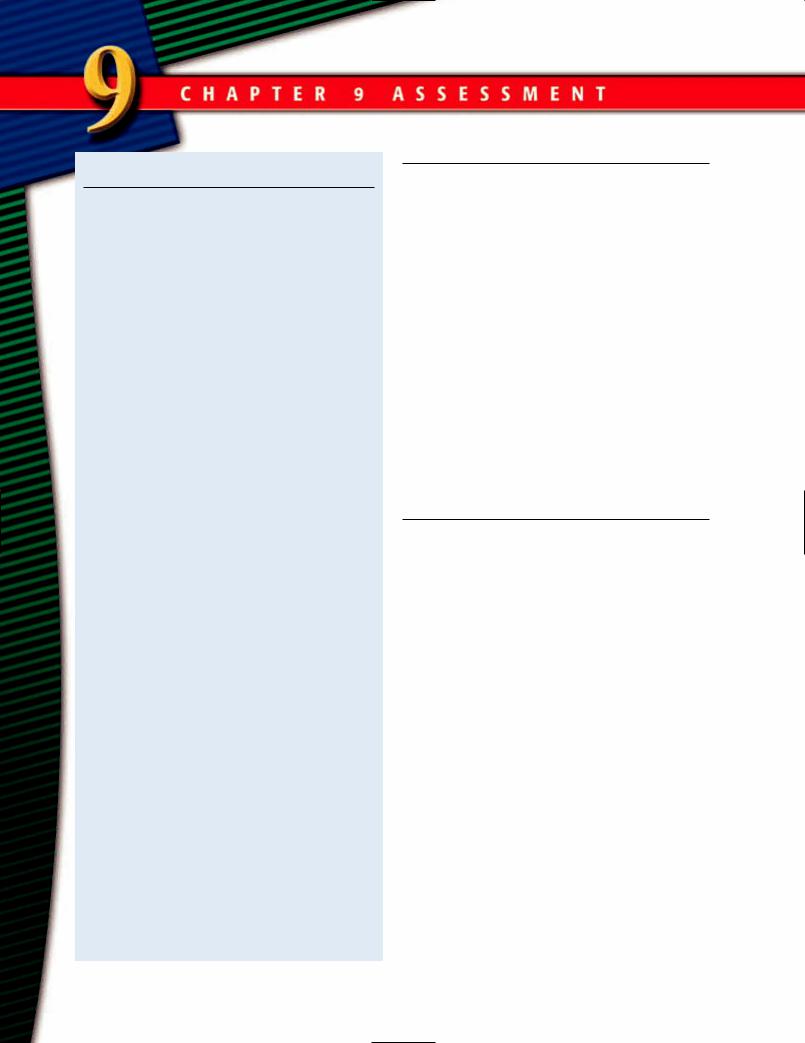
Chapter Summary
Be sure you know and remember the following key points from the chapter sections.
Section 1
People who demand labor are employers.
People who supply labor are employees.
The price of labor is called the wage rate.
The equilibrium wage rate occurs at the point where the quantity of labor supplied equals the quantity of labor demanded.
Wage rates differ because the supply and the demand for different types of labor are not the same.
A job’s benefits come in both money and nonmoney forms.
Labor is a derived demand—the result of the demand for a good.
The minimum wage rate is a government-set wage floor.
Money wages are the actual dollars received for doing a job.
Real wages are the value of the dollars in terms of what they buy.
The Consumer Price Index (CPI) is the average price, or index, of a group of goods.
Section 2
A labor union seeks to increase the wages and improve the working conditions of its members.
A closed shop is an organization that hires only union members; the Taft-Hartley Act makes closed shops illegal.
A union shop requires union membership within a certain period after taking a job.
Right-to-work laws, in place in many states, make it illegal to require union membership for a specific job.
Unions began to emerge in the United States after the Civil War and experienced many ups and downs in labor’s history.
Economics Vocabulary
To reinforce your knowledge of the key terms in this chapter, fill in the following blanks on a separate piece of paper with the appropriate word or phrase.
1.The ______ sets a level below which wage rates are not allowed to fall.
2.A(n) ______ is an organization that hires only union members.
3.A ______ is a tactic used by unions to put pressure on employers by having workers refuse to work.
4.The price of labor is called the ______.
5.A(n) ______ is an organization that requires employees to join the union within a certain period of time after being hired.
6.The ______, which was passed in 1947, gave the states the right to pass right-to-work laws.
Understanding the Main Ideas
Write answers to the following questions to review the main ideas in this chapter.
1.In a competitive labor market, what happens to the wage rate when a surplus of labor occurs? A shortage of labor?
2.John earns a higher wage rate than Wilson. It necessarily follows that the demand for John’s labor services is greater than the demand for Wilson’s labor services. Do you agree or disagree? Explain your answer.
3.If the minimum wage rate is higher than the equilibrium wage rate, fewer people will be hired because the cost of labor is too high. Do you agree or disagree? Explain your answer.
4.What are unions’ effects on union wages? On nonunion wages? Explain your answers.
5.Identify two factors that can change the demand for labor.
6.Can a person’s money wage decrease at the same time his or her real wage increases? Explain.
7.Outline the traditional view and the new view of labor unions.
8.Outline the details of the Wagner Act.
9.What is a public employee union?
248 Chapter 9 Labor, Employment, and Wages
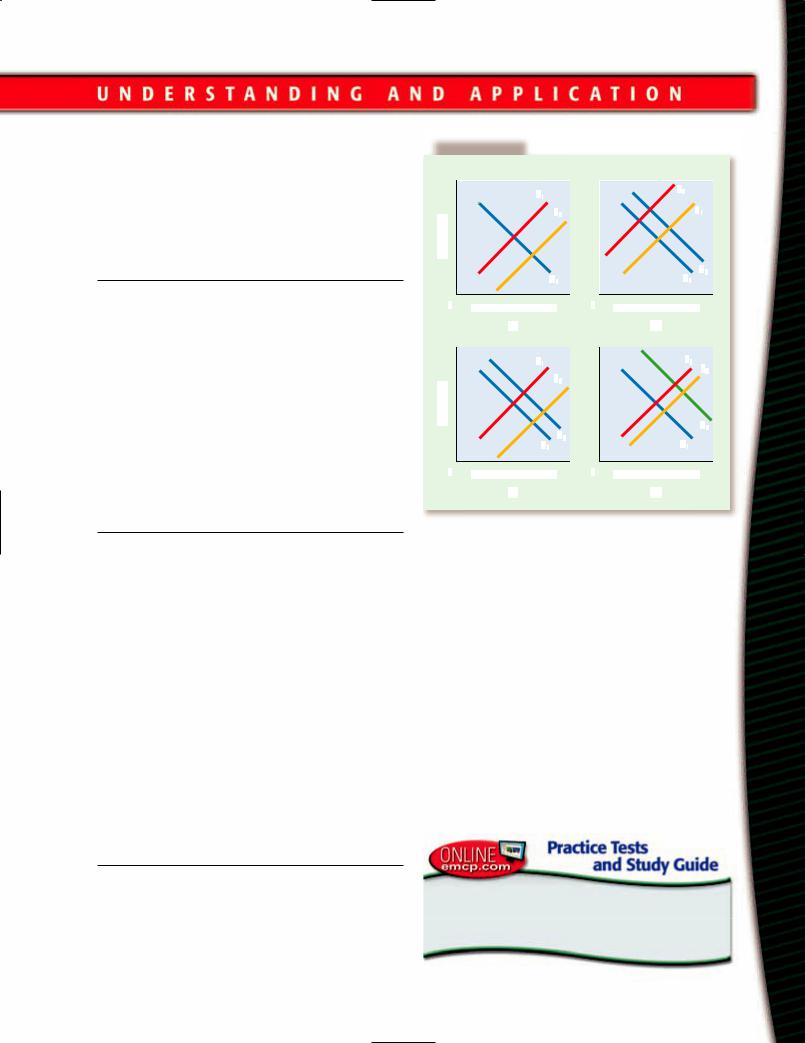
10.If the demand for labor increases by the same amount as the supply of labor increases, will wages rise, fall, or remain the same?
11.“Economists are against regulation of business and labor.” Do you agree or disagree with this statement? Explain your answer.
Doing the Math
Do the calculations necessary to solve the following problems.
1.Alicia turned down a job that pays $60,000 a year for a job that pays $32,000 a year. The nonmoney benefits in the lower-paying job equal at least what dollar amount?
2.In year 1, Bob earns $1,000 a month when the CPI is 130. In year 2, Bob earns $1,500 a month when the CPI is 135. In which year is Bob’s real income higher? What percentage higher?
Working with Graphs and Tables
Graphically represent the following.
1.The equilibrium wage rate is currently $10 an hour. The demand for labor increases by more than the supply of labor increases. The new equilibrium wage rate is $12. Be sure to label your axes.
2.The demand for labor falls by more than the supply of labor rises.
3.The demand for labor rises by the same amount as the supply of labor rises.
4.In Exhibit 9-6, the original demand and supply
curves are labeled D1 and S1, and the new demand and supply curves are labeled D2 and S2. In parts (a) through (d), identify what will happen to the equilibrium wage as a result of the change in demand, supply, or both.
|
E X H I B I T 9-6 |
|
|
|
|
|
|
|
|
|
|
|
|
|
|
|
|
|
|
|
|
|
|
|
|
|
|
|
|||||||
|
|
|
|
|
|
|
|
|
|
|
|
|
|
|
|
|
|
|
|
|
|
|
|
|
|
|
|
|
|
|
|
|
|
|
|
|
|
|
|
|
|
|
|
|
|
|
|
|
|
|
|
|
|
|
|
|
|
|
|
|
|
|
|
|
|
|
|
|
|
|
|
|
|
|
|
|
|
|
|
|
S |
|
|
|
|
|
|
|
|
|
|
|
|
|
|
|
|
|
|
|
|
|
|
|
|
|
|
|
|
|
|
|
|
|
|
|
|
|
|
|
|
|
|
|
|
|
|
|
|
|
|
|
|
|
|
|
|
|
|
|
|
||
|
|
|
|
|
|
|
|
|
|
|
|
|
|
|
|
|
|
|
|
|
|
|
|
|
|
|
|
|
|
|
|
|
|
|
|
|
Wage rate |
|
|
|
|
|
|
|
|
|
|
S |
2 |
|
|
|
|
|
|
|
|
|
|
|
|
|
|
|
|
|
|
|
|
|
|
|
|
|
|
|
|
|
|
|
|
|
|
|
|
|
|
|
|
|
|
|
|
|
|
|
|
|
|
|
|
|
|
|
|
||
|
|
|
|
|
|
|
|
|
|
|
|
|
|
|
|
|
|
|
|
|
|
|
|
|
|
|
|
|
|
|
|
|
|||
|
|
|
|
|
|
|
|
|
|
|
|
|
|
|
|
|
|
|
|
|
|
|
|
|
D |
||||||||||
|
|
|
|
|
|
|
|
|
|
|
|
|
|
|
|
|
|
|
|
|
|
|
|
|
2 |
|
|||||||||
|
|
|
|
|
|
|
|
|
|
|
D |
|
|
|
|
|
|
|
|
|
D |
|
|
|
|
|
|
|
|
|
|
|
|
||
|
|
|
|
|
|
|
|
|
|
|
|
|
|
|
|
|
|
|
|
|
|
|
|
|
|
|
|
|
|||||||
|
|
|
|
|
|
|
|
|
|
|
|
|
|
|
|
|
|
|
|
|
|
|
|
|
|
|
|
|
|
|
|
|
|||
0 |
|
|
0 |
|
|
|
|||||||||||||||||||||||||||||
|
|
Number of workers |
|
Number of workers |
|||||||||||||||||||||||||||||||
|
|
||||||||||||||||||||||||||||||||||
|
|
|
|
|
|
|
|
|
|
|
|
|
|
|
|
|
|
|
|
|
|
|
|
|
|
|
|
|
|
|
|
|
|
|
|
|
|
|
|
|
(a) |
|
|
|
|
|
|
|
|
|
|
|
(b) |
||||||||||||||||||
|
|
|
|
|
|
|
|
|
|
|
|
|
|
|
|
|
|
|
|
|
|
|
|
|
|
|
|
|
|||||||
|
|
|
|
|
|
|
|
|
|
|
|
|
|
|
|
|
|
|
|
|
S |
||||||||||||||
|
|
|
|
|
|
|
|
|
|
|
|
|
|
|
|
|
|
|
|
|
|
|
|
|
|
|
S |
|
|
|
|
||||
|
|
|
|
|
|
|
|
|
|
|
|
|
|
|
|
|
|
|
|
|
|
|
|
|
|
|
2 |
|
|||||||
|
|
|
|
|
|
|
|
|
|
|
|
|
|
|
|
|
|
|
|
|
|
|
|
|
|
||||||||||
|
|
|
|
|
|
|
|
|
|
|
|
|
|
|
|
|
|
|
|
|
|
|
|
|
|
|
|
|
|
|
|
|
|
|
|
|
Wage rate |
|
|
|
|
|
|
|
|
|
|
|
|
|
|
|
|
|
|
|
|
|
|
|
|
|
|
|
|
|
|
|
|
|
|
|
|
|
|
|
|
|
|
|
|
|
|
|
|
|
|
|
|
|
|
|
|
|
|
|
D |
|
|
|
|
||||||
|
|
|
|
|
|
|
|
|
|
|
|
|
|
|
|
|
|
|
|
|
|
|
|
|
2 |
||||||||||
|
|
|
|
|
|
|
|
|
|
|
|
|
|
|
|
|
|
|
|
|
|
|
|
|
|
|
|
|
|
|
|||||
|
|
|
|
|
|
|
|
|
|
|
|
|
|
|
|
|
|
|
|
|
|
|
|
|
|
|
|
|
|
|
|
||||
|
|
|
|
|
|
|
|
|
|
|
|
|
|
|
|
|
|
|
|
|
D |
|
|
|
|
|
|
|
|
|
|
|
|
|
|
|
|
|
|
|
|
|
|
|
|
|
|
|
|
|
|
|
|
|
|
|
|
|
|
|
|
|
|
|
|
|
|
|
|
||
0 |
|
|
0 |
|
|
|
|||||||||||||||||||||||||||||
|
|
Number of workers |
|
|
|
Number of workers |
|||||||||||||||||||||||||||||
|
|
||||||||||||||||||||||||||||||||||
|
|
|
|
|
|
|
|
|
|
|
|
|
|
|
|
|
|
|
|
|
|
|
|
|
|
|
|
||||||||
|
|
|
|
|
(c) |
|
|
|
|
|
|
|
|
|
(d) |
||||||||||||||||||||
ating wages with management. Current union members are paid $18 an hour. The objective of the labor union executives is to make sure that over the next year, their members’ wages do not fall in real terms. The CPI in the current year is 179, and the expected CPI next year is 190. What money wage would maintain the real wage of the union members?
2.Analysis. Three jobs, A, B, and C, all pay the same salary, $70,000 a year. What additional information do you need to decide which of the
three jobs is the best job for you?
Solving Economic Problems
Use your thinking skills and the information you learned in this chapter to find solutions to the following problems.
1.Application. Suppose you are an economist hired by a labor union that is currently negoti-
Go to www.emcp.net/economics and choose Economics: New Ways of Thinking, Chapter 9, if you need more help in preparing for the chapter test.
Chapter 9 Labor, Employment, and Wages 249
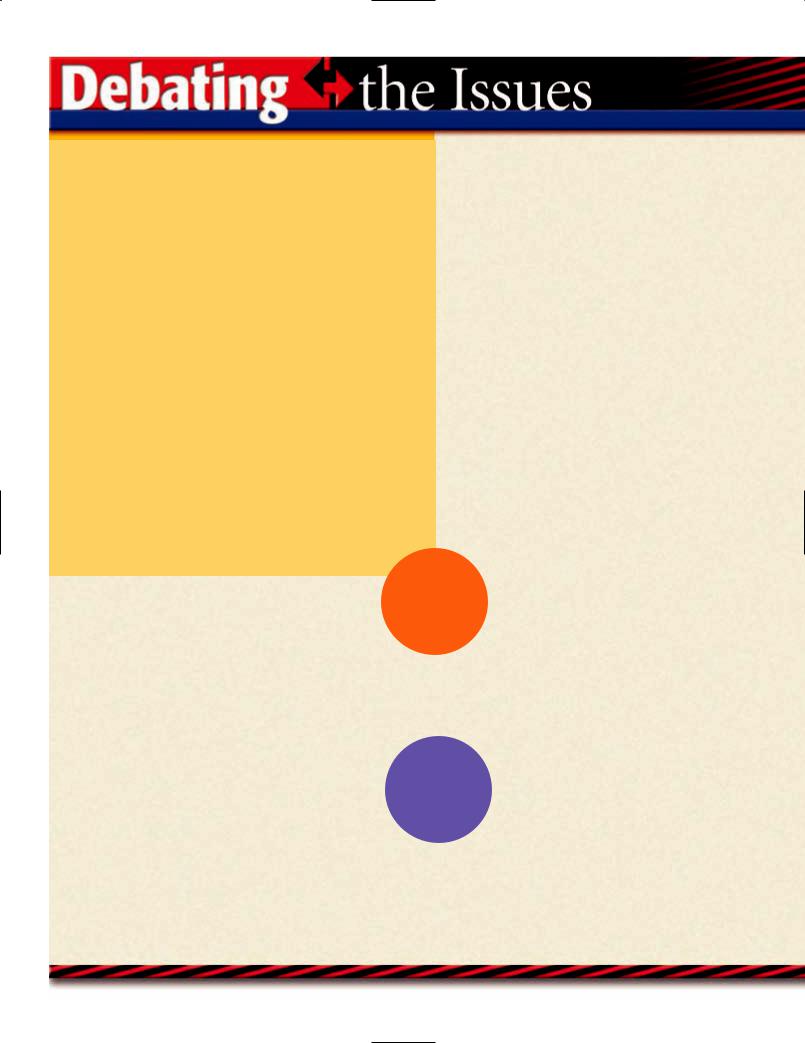
Should There Be a
Minimum Wage?
Like many high school students, you may have a job and work after school. If so, there is a good chance that you earn the minimum wage, which is set by the
U.S. Congress. It is against the law for employers to pay workers less than the minimum wage. If the minimum wage is $5.15 an hour, then it is unlawful for an employer to pay an employee less than this amount.
Do you think that a minimum wage is good for workers and good for the economy, too? Some people argue in favor of it; other people argue against it. Some people argue that the minimum wage should be raised; other people argue that it should not be. Let’s listen in on a conversation between Mike and Mrs. Peters. Mrs. Peters owns a small bakery in town. Mike, 17 years old, works at the hardware store three doors down from the bakery. Mike currently earns the minimum wage.
Mrs. Peters: How are you doing today, Mike? What can I get for you?
Mike: I’ll have a chocolate éclair and a milk. And, by the way, I’m doing pretty well today. On my way to work I heard that Congress is thinking of raising the minimum wage. That will mean
more money for me.
Mrs. Peters: I think the minimum wage is something that sounds better than it is.
Mike: What do you mean? What
could possibly be wrong with the minimum wage?
Mrs. Peters: Well, for one thing, it goes against the whole idea of free enterprise. Under free enterprise, employers and
employees should be able to make their own deals. They shouldn’t have government telling them how much to pay.
Mike: But if there weren’t a minimum wage, employers would pay their employees next to nothing. Perhaps instead of my earning $6 an hour, I’d earn $2 an hour.
Mrs. Peters: Okay, let’s say that you are earning $6 an hour. Along comes the government and tells your employer that he has to pay you $7.50 an hour. Jim may decide to fire you. It may be worth it for Jim to pay you $6 an hour, but not $7.50 an hour. Has the minimum wage helped you? I don’t think so. I think it has priced you out of a job.
Mike: But it’s possible that I’ll keep my job as the wage goes from $6 to $7.50. Fact is, I may be worth $7.50 an hour, but Jim is paying me only $6 an hour so he can earn higher profits. What the minimum wage does is simply force Jim to pay me what
I’m worth.
Mrs. Peters: If you were really worth $7.50 an hour, you would be earning $7.50 an hour right now. The boss who thinks you are worth $7.50 hour would simply offer you that
amount to come work for him instead of working for Jim. That’s how he would compete you away from Jim.
But let’s go with what you say. Let’s suppose that Congress tells your employer he has to pay you $7.50 an hour. And
let’s suppose you keep your job. That doesn’t mean some people won’t lose their jobs. Everyone knows that employers hire more people at lower wages than at higher
wages. As wages go up, they are going to hire fewer people. In other words, some of the people working at the lower wages will be fired.
250 Unit III Microeconomics

Mike: I don’t think anyone has to lose his job as the wage goes up. Employers will simply end up with lower profits.
Mrs. Peters: That might work if you’re talking about Microsoft or General Motors, but what about Joe’s Pizza or the corner deli?
Some companies are just squeaking by, so that any mandated cost increase will hurt them. They will try to cut their costs by firing some people.
The other thing is that not all businesses are faced with the same set of circumstances. Circumstances may differ from one region of the country to another. The economy may be booming in the Southwest and businesses can easily pay higher wages. But the economy may be sluggish in the Midwest and businesses can’t pay higher wages. A set minimum wage that every business has to pay, no matter what its circumstances, doesn’t take this into account.
Mike: I don’t know, I hear what you are saying, but I still think that without the minimum wage, too many employers would squeeze their employees.
Mrs. Peters: Mike, there are whole industries in this country where the minimum wage is not relevant. No one who works for an accounting firm is paid the minimum wage, no one who works as a computer scientist is paid the minimum wage, no one who works as an attorney is paid the minimum wage. All these people earn much more than the minimum wage. Do they earn more because government has ordered the companies to pay them more than the minimum wage? Not at all. The government hasn’t said a thing. The companies simply pay them more because they can’t hire these people without paying more. It is a matter of supply and demand, Mike. Companies have to pay the wages that are determined in the market by the forces of supply and demand.
Mike: Oh, come on. You know there is a big difference between what an attorney earns and what I earn. The minimum wage law
isn’t there to protect attorneys, accountants, and computer scientists. It is there to protect the little guy. The guy without much skill or experience.
Mrs. Peters: But, that’s just the point. The minimum wage doesn’t protect this person. It often just prices him out of a job. You can’t make employers pay more for a person than that person is worth to them. If
a person is worth only $5 an hour to an employer, and the government says you have to pay this person $7 an hour, you know what is going to happen? That person is going to go without a job.
What Do You Think?
1.Who do you think makes the stronger argument, Mike or Mrs. Peters? Defend your answer.
2.What are Mike’s strong points? Weak points? What are Mrs. Peters’s strong and weak points?
3.Do you think the minimum wage should be raised, left where it currently is, or eliminated altogether? Explain your answer.
Unit III Microeconomics 251
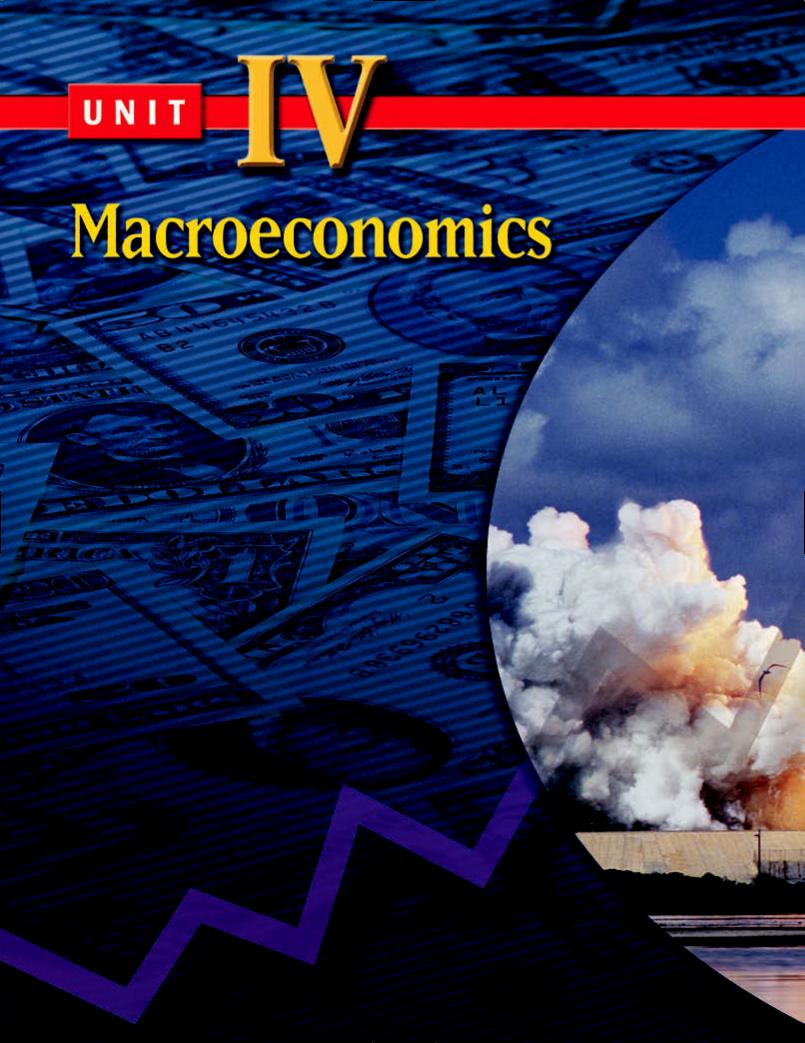
C H A P T E R 1 0
Money, Banking, and the Federal Reserve System
C H A P T E R 1 1
Measuring Economic
Performance
C H A P T E R 1 2
Economic Changes and Cycles
C H A P T E R 1 3
Fiscal and Monetary Policy
C H A P T E R 1 4
Taxing and Spending
252

“The ideas of economists . . . are more powerful than is commonly understood. Indeed the world is ruled by little else.”
—John Maynard Keynes
253
